Topic 4 - Sources of Radiation
Decay Chains |
 |
 |
Serial Transformation
- Radioactive decay chains
- Described by Bateman equations
- Secular
- Transient
- No equilbrium
- Mixtures of unrelated nuclides
Decay schemes

- Fission fragment example
- 90Kr rapidly disappears
- 90Rb created and also disappears
- 90Sr present for extended period, while 90Y
grows in
- Final product is stable
Decay Equations
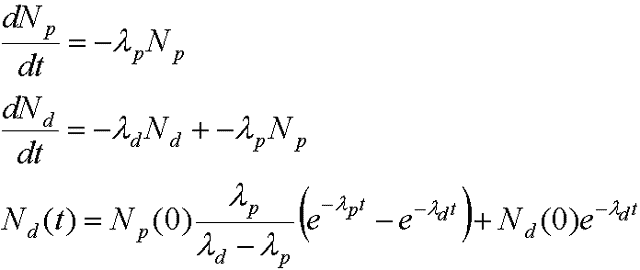
- Where
- Np is the # of atoms of parent
- Nd is the # atoms of daughter
- lp or d is the decay constant (ln2/T½ )
of parent or daughter

- The second term in the activity equation is just the residual daughter
product activity remaining from any that was present at t=0.
- This equation is simpler if we set this value to zero and just examine
the first term. The equation for activity of the daughter is known as
the Bateman equation
Secular Equilibrium
- Half-life of parent is >>> daughter,
- Decrease of parent is negligible over observation period
- Example: 226Ra (half-life =1620 yr) decays to 226Rn
(half-life 4.8 days).
- The observation period is so small relative to 1620 years that
1 gram of Ra-226 was used to define the unit of radioactivity -
the Curie.
- When the half-life of parent is >>the daughter, the Bateman
Equation reduces to:

Secular Equilibrium
- The plot of parent and daughter activity in secular equilibrium is:
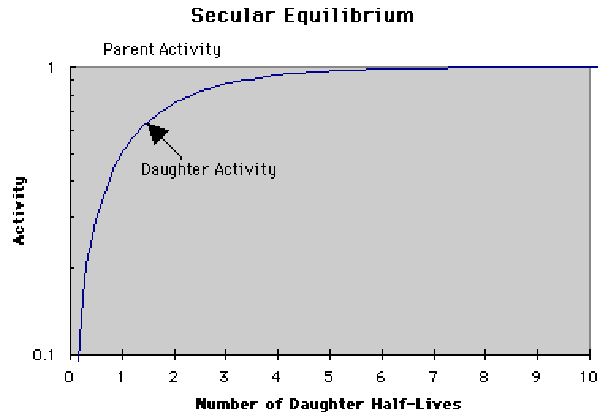
Transient Equilibrium
- When the parent half-life is of the order of the observation time
and the daughter half-life is considerably shorter (but not negligibly
shorter).
- Examples:
- 132Te (78 hours) decaying to 132I (2.3 hours)
- 113Sn decaying to 113mIn (1.7 hours)
- 99Mo parent - 99mTc
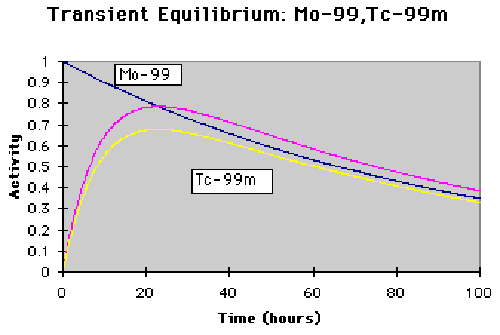
- Upper curve for 99mTc is the straight application of the
Bateman equation.
- Lower curve: takes into account the fact that about 10% of the 99Mo
decays go promptly to 99Tc
- Ratio of parent to daughter
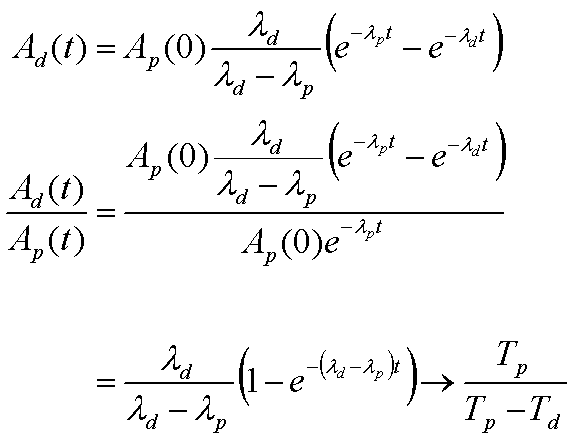
Maximum Activity
- Use calculus to find the time at which the daughter reaches a maximum

No equilibrium
- When the daughter half-life is longer than the parent half-life,
there is no equilibrium established between them. As the short-lived
parent dies off, the activity of the daughter starts from zero, grows
to a maximum, then falls slowly at its own decay rate (the parent having
since died off and not able to influence daughter rate any further).
Mixed Sources
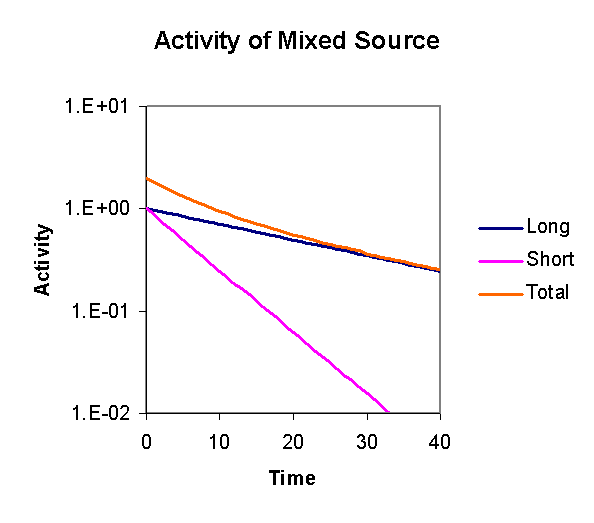
|









